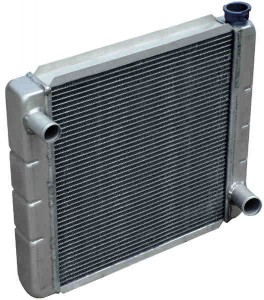How to Maintain Your Car’s Engine Cooling System Part 2
Welcome to part 2 on how to maintain your car’s engine cooling system. You can always check out part 1 in order to know more about the components of your engine cooling system.
There are a lot of car owners who take the engine cooling system for granted. What happens next is being left stranded in the middle of the road–with a severely overheating engine. Just follow these simple tips and you can prevent this unfortunate scenario, and save you from spending thousands of dollars in repair bills.
It does not matter if you want to buy a new car or an affordable used car. Understanding the engine cooling system is vital in preserving the life of your automobile.
Think about it: the engine is the ‘heart’ of your automobile, and is one of the most expensive components of your car.
Car Engine Cooling System Maintenance
Tip 2: After inspecting the water and coolant level of the radiator and reservoir, you should determine if there are any leaks in the system. Remember that the engine cooling system is a sealed system–meaning, any significant loss of water and coolant is a sure sign of a leak.

The radiator is connected to the engine via 2 rubber hoses: one to bring the water inside the engine, and a hose at the bottom to circulate the hot fluids back to the radiator. Carefully inspect the hoses for leaks, cracks, and loose connections. If you notice that the hose is leaking water or coolant, you should have this inspected and replaced immediately. Due to the severe heat that rubber hoses have to endure inside the engine bay, premature wear and tear is inevitable.
Tip 3: This applies to both new and used cars–especially older vehicles. You should have the radiator flushed at least once a year.
You might think that this is an unnecessary expense on your part, but the truth is that flushing your radiator will not only result in a more efficient engine cooling system, but this will also make your engine run smoother, quieter, and cooler as well.
You can do this yourself or have a mechanic flush the radiator for you. Basically, all you need to do is drain the water inside the radiator and pour in a fresh mix of water and coolant. You can refer to the owner’s manual of your car for specific instructions on how to find and remove the drain plug of the radiator.
We will discuss the simple steps on how to flush and drain your engine cooling system in the next post.
Again, never forget to check the coolant level of your engine at least once a week. If you notice that the engine temperature gauge is pointing to the ‘H’ level (or Hot) while you are driving, remember to relax, pull over to the side of the road, pop open the hood, and call for assistance.
And no matter what happens, DO NOT REMOVE THE RADIATOR CAP when the engine is hot, especially when the engine is overheating.

